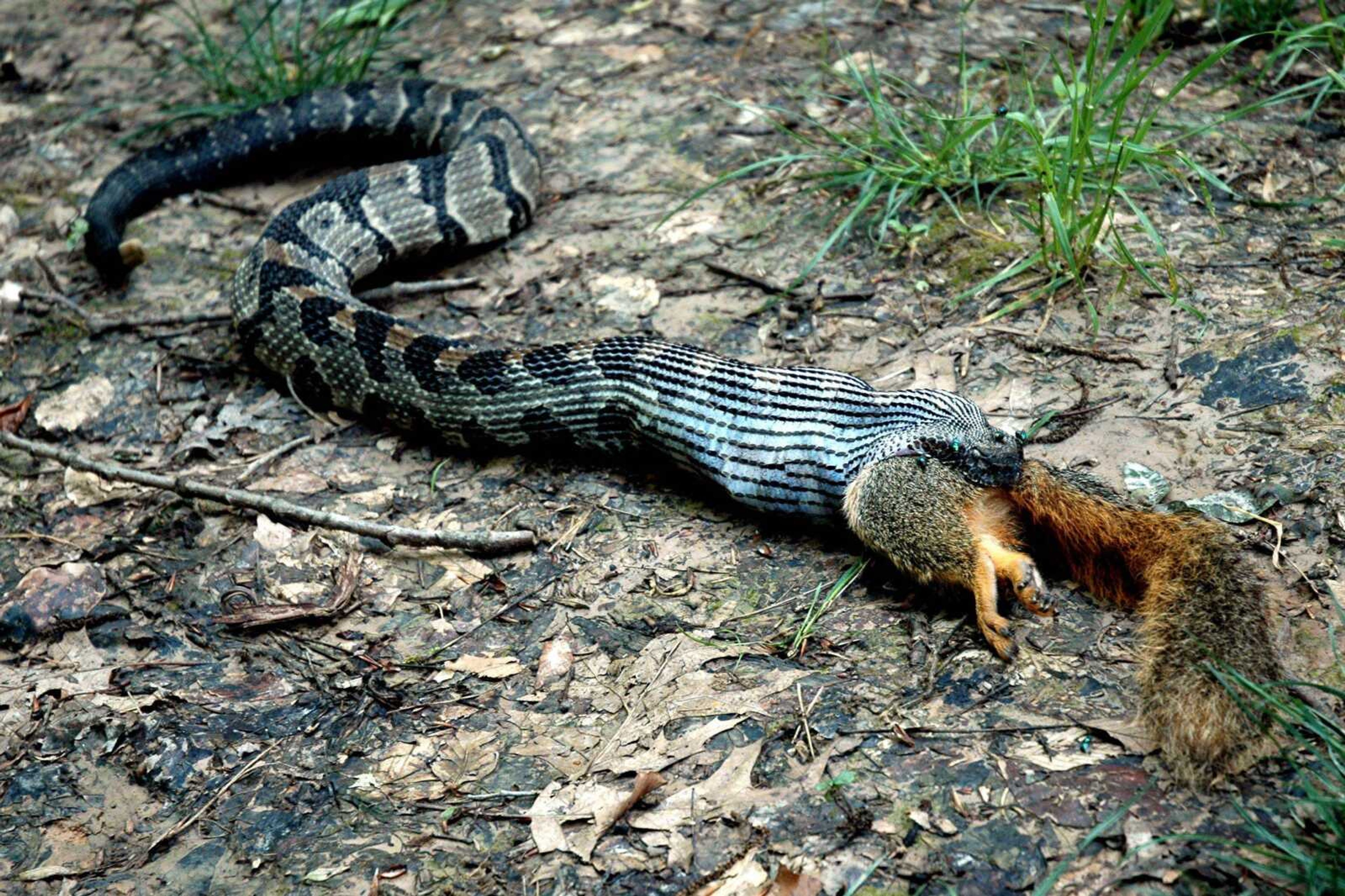The timber rattler is a poisonous snake that can reach about 60 inches in length. Its preferred habitat is rugged, wooded, rocky areas but it will range into fields and relatively open areas. A timber rattler will have a wide triangular head and tan colored rattles at the end of its black tail. The young are born live, each with a small single rattle and are venomous at birth.
During warm months timber rattlers are active both day and night. During autumn they will seek a place such as a rocky bluff to hibernate through the winter. Widespread throughout most of eastern and central United States, this snake is a solitary animal gentle by nature. Widely misunderstood, it will not aggressively attack large animals such as humans preferring to save its venom for immobilizing prey such as small rodents, frogs, lizards and small birds. A timber rattler will not strike a human unless it is provoked or startled. They prefer to be left alone and will sound an alarm when they perceive danger approaching by shaking their rattles. This sound is much like a fruit jar full of buzzing bumble bees.
Although not on the endangered list, timber rattlers are becoming less common and are protected in Missouri. They should not be killed. I photographed the timber rattler pictured here on an old road between a woods and a very dense thicket. The fox squirrel was an adult approximately one foot long. I estimate the snake to be about five feet long. Its tail was buzzing as I took this photo with a 70 mm lens at a distance of about six feet away. I did not harm this absolutely beautiful creature. But I feel blessed to be able to witness it eating what was probably the largest meal of its life. Go cautiously when photographing nature.
Connect with the Southeast Missourian Newsroom:
For corrections to this story or other insights for the editor, click here. To submit a letter to the editor, click here. To learn about the Southeast Missourian’s AI Policy, click here.








